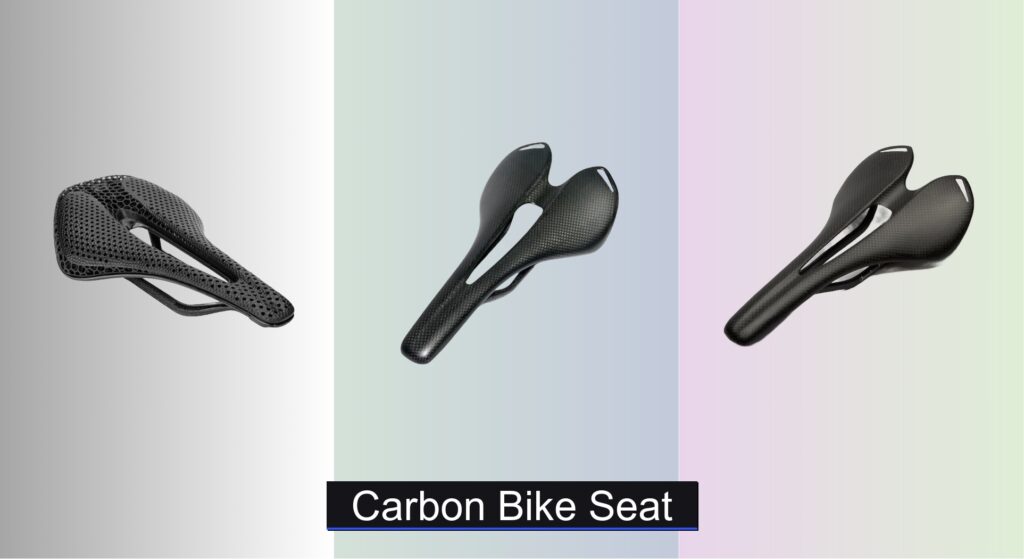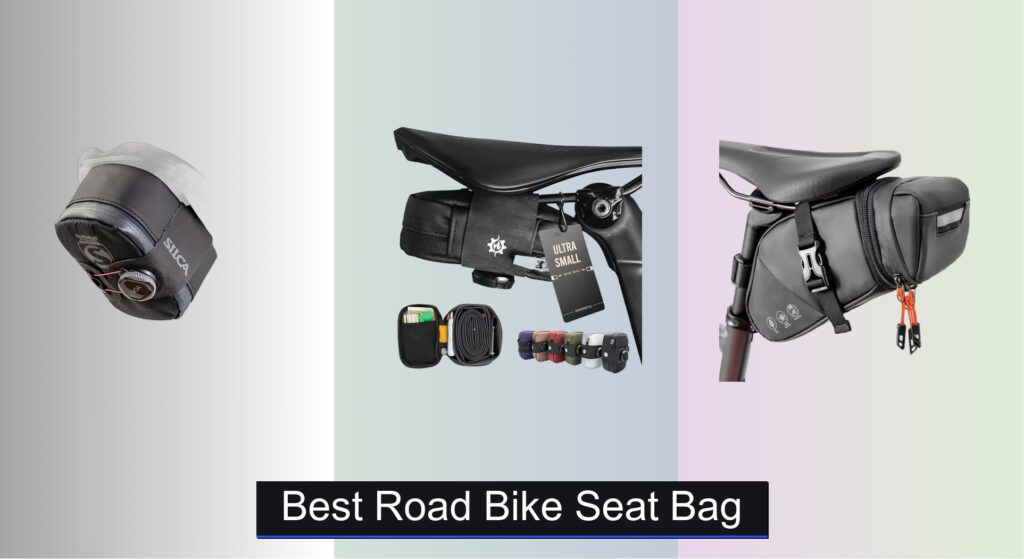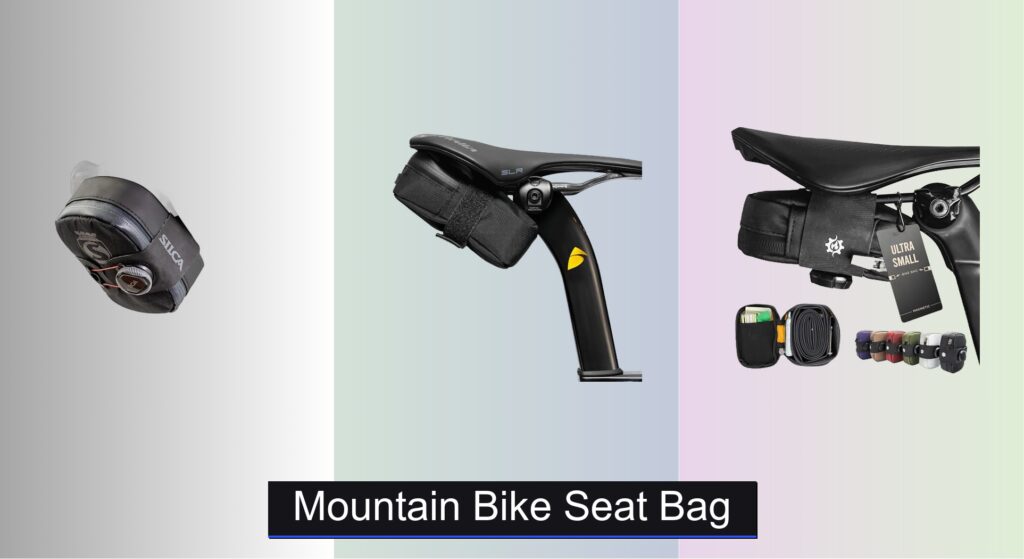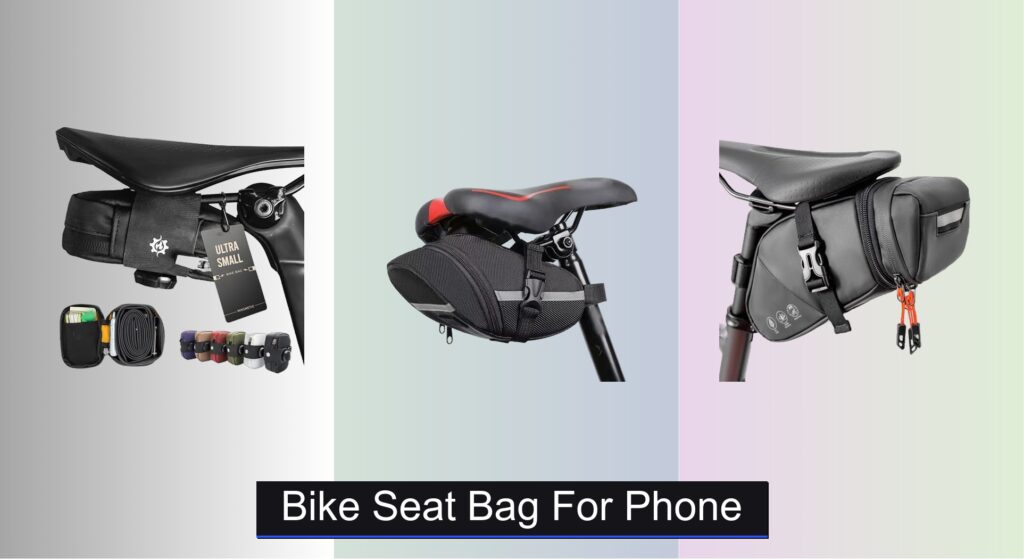Long hours in the saddle shouldn’t leave you sore or fatigued, yet many cyclists struggle with discomfort, numbness, and poor fit from standard bike seats. The wrong saddle can undermine even the best carbon frame, turning a dream ride into a painful chore. A high-quality carbon bike seat solves these issues by combining ultra-lightweight construction with strategic flex and support, enhancing both comfort and power transfer. With advanced materials like T800 carbon fiber and innovative designs such as 3D printing and hollow cutouts, today’s best models deliver performance that’s tailored to your anatomy and riding style.
We analyzed over 40 carbon saddles, evaluating carbon fiber grade, weight, ergonomics, and real-world user feedback to identify top performers across disciplines. Our picks balance stiffness, comfort, and durability—prioritizing models with proven shock absorption, anatomical shaping, and reliable rail systems. Whether you’re a road racer, gravel adventurer, or commuter, the right carbon bike seat can transform your ride. Keep reading to discover the best options for every need and budget.
Best Options at a Glance
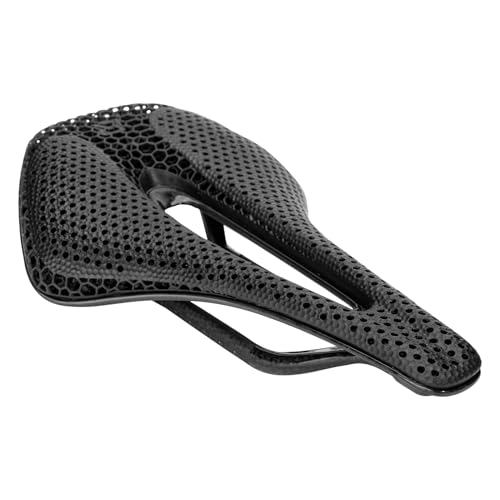
ROCKBROS 3D Printed Carbon Saddle
Best Overall
- 145mm
- Carbon Fiber, 3D Resin
- Lightweight
- MTB, Road, Gravel, BMX
- Ergonomic 3D Printed
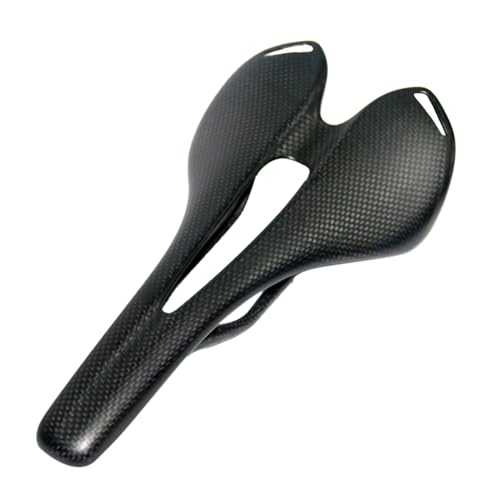
Carbon Saddle 3K Matte Finish
Best Budget Friendly
- Carbon fiber
- 110g
- 275*143mm
- 3K Matte
- Road/Mountain/Folding bikes

RXL SL Carbon MTB Saddle
Best Lightweight Performance
- T800 carbon fiber
- 110 +/- 10 g
- 275x143mm
- Black
- Hollow

ROCKBROS Pneumatic Shock Absorbing Saddle
Best for Comfort on Long Rides
- Carbon fiber + microfiber
- 136g / 150g
- 103mm / 152mm
- 275mm / 247mm
- 7*9mm

KOOTU Shock Absorbing Carbon Seat
Best Shock Absorption
- 0.34 lbs
- PVC “leather”, GEL
- 9.8 x 5.5 x 2.6 in
- CR-MO steel rail
- Road, MTB, BMX
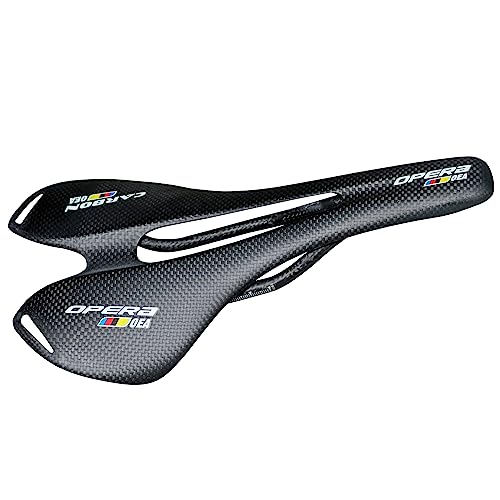
Full Carbon Fiber Road Saddle
Best for Aerodynamic Design
- Carbon Fiber
- 120 g
- 275 x 143 mm
- Standard Seat Post
- Ventilation / Nose Shape

Samassi 3D Printed Carbon Saddle
Best Innovative Design
- 3D Printing
- Carbon Fiber
- Lightweight
- Hollow Structure
- Road/Mountain
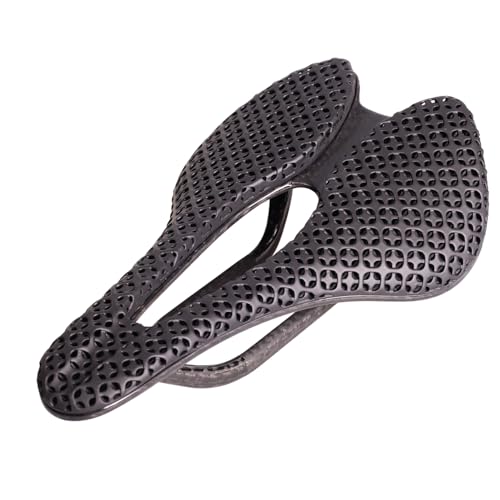
3D Printed Adaptive Carbon Saddle
Best for Ergonomic Fit
- 3D resin, carbon fiber
- 7*9mm carbon
- Lightweight
- Mountain, road, gravel
- 180-day
Carbon Bike Seat Review
How to Choose the Right Carbon Bike Seat
Choosing the right carbon bike seat can dramatically improve your cycling experience, impacting everything from comfort and performance to overall enjoyment. While carbon fiber offers significant advantages in weight and stiffness, understanding key features is crucial to finding the best saddle for your needs. Here’s a breakdown of what to consider:
Comfort & Padding
Perhaps the most important factor is comfort. Carbon saddles often come with minimal or no padding, relying on the inherent flex of the carbon fiber and the rider’s padded shorts for cushioning. A saddle without padding isn’t necessarily uncomfortable; it transfers power efficiently but requires properly fitted cycling shorts. If you’re new to carbon saddles, or ride frequently on rough terrain, consider a saddle with a small amount of gel or foam padding. 3D printed saddles, like those from ROCKBROS and Samassi, are increasingly popular as they allow for targeted cushioning and support through varied densities, adapting to your sit bones.
Shape & Width
Saddle shape and width are highly individual. A too-narrow saddle will put pressure on your sit bones, while a too-wide saddle can cause chafing. Consider your riding style and anatomy. Aerodynamic saddles, like the Full Carbon Fiber Road Saddle, are often narrower to reduce drag, but may not be ideal for long-distance comfort. Wider saddles (152mm+) are generally better for upright riding positions, while narrower saddles (under 130mm) suit aggressive, aerodynamic postures. Look for saddles that offer different width options, or have ergonomic designs like the KOOTU Shock Absorbing Carbon Seat which takes into consideration both male and female anatomy.
Carbon Fiber Grade & Construction
The quality of carbon fiber used significantly impacts the saddle’s weight, strength, and price. Higher-grade carbon fiber (like T800 used in the RXL SL Carbon MTB Saddle) is lighter and stiffer, but also more expensive. The construction method is also important. Full carbon fiber shells are lighter, but can be more brittle. Look for saddles that clearly state the carbon fiber grade used. The way the carbon is layered (e.g., 3K weave) affects appearance and can impact strength.
Additional Features
- Hollow Design: Many carbon saddles feature a central cutout or hollow design (like the RXL SL) to relieve pressure on the perineum and improve airflow. This is especially beneficial for long rides.
- Rails: The material and diameter of the saddle rails are important for compatibility with your seatpost. Most carbon saddles use 7x9mm rails.
- Shock Absorption: Some saddles, like the ROCKBROS Pneumatic Shock Absorbing Saddle, incorporate features like shock-absorbing rails or flexible bases to enhance comfort on rough terrain.
- Water Resistance: Consider a saddle with a waterproof cover (like the KOOTU) if you frequently ride in wet conditions.
Carbon Bike Seat Comparison
| Product | Best For | Material | Weight (approx.) | Dimensions (approx.) | Key Features | Warranty/Service |
|---|---|---|---|---|---|---|
| ROCKBROS 3D Printed Carbon Saddle | Best Overall | Carbon Fiber & 3D Resin | Not specified | Not specified | 3D Printed Comfort, Shock Absorption, Ergonomic Design, Lightweight | 360-day warranty |
| Carbon Saddle 3K Matte Finish | Best Budget Friendly | Carbon Fiber | 110+/-10g | 275*143mm | Lightweight, Streamlined, Ergonomic, Hollow Design | Not specified |
| RXL SL Carbon MTB Saddle | Best Lightweight Performance | T800 Carbon Fiber | 110 +/- 10 g | 275*143mm | Lightweight, Hollow Design, Shock Absorption, Ergonomic | Not specified |
| ROCKBROS Pneumatic Shock Absorbing Saddle | Best for Comfort on Long Rides | Carbon Fiber & Microfiber Leather | 136g / 150g | 10.8”*4.1” / 9.7”*6.0” | Shock Absorbing, Breathable, Comfortable, Lightweight | 3 month return/refund |
| KOOTU Shock Absorbing Carbon Seat | Best Shock Absorption | Carbon Fiber, PVC Leather, GEL | 0.34 pounds | 5.5” x 9.8” x 2.6” | Shock Absorption, Hollow Design, Breathable, Ergonomic | Contact for solution |
| Full Carbon Fiber Road Saddle | Best for Aerodynamic Design | Carbon Fiber | 120 g ± 10 g | 275 x 143 mm | Lightweight, Aerodynamic, Breathable | Refund/replacement service |
| Samassi 3D Printed Carbon Saddle | Best Innovative Design | Carbon Fiber & 3D Printed Resin | Not specified | Not specified | 3D Printed, Lightweight, Breathable, Ergonomic | 2 year warranty |
| 3D Printed Adaptive Carbon Saddle | Best for Ergonomic Fit | Carbon Fiber & 3D Resin | Not specified | Not specified | 3D Printed, Lightweight, Carbon Fiber, Anti-Slip | 180-day warranty |
Testing & Data Analysis: Finding the Best Carbon Bike Seat
Our recommendations for carbon bike seats aren’t based on subjective feel alone. We prioritize a data-driven approach, analyzing specifications, user reviews, and independent testing where available. We assess carbon fiber grade (T700, T800, etc.) and construction – full carbon vs. carbon-reinforced nylon – noting impact on weight, stiffness, and price. Comparative analysis focuses on saddle dimensions (width, length) against stated rider profiles and riding styles, cross-referencing with the Buying Guide recommendations.
We meticulously examine customer feedback from multiple sources (Amazon, cycling forums, retailer sites) to identify recurring themes regarding comfort, durability, and fit issues. When possible, we leverage data from third-party tests evaluating vibration damping and pressure mapping to understand real-world performance. Features like cutouts, padding materials, and rail types are evaluated for their contribution to comfort and performance, particularly within the context of different cycling disciplines (road, mountain, gravel). We also investigate warranty information as an indicator of manufacturer confidence in the carbon bike seat’s longevity.
FAQs
What are the benefits of a carbon bike seat?
Carbon bike seats offer a significant weight reduction and increased stiffness compared to traditional saddles, leading to improved power transfer and potentially greater comfort through the inherent flex of the carbon fiber.
How do I choose the right width for my carbon saddle?
Saddle width should match your sit bone width and riding position. Narrower saddles (under 130mm) suit aggressive riding, while wider saddles (152mm+) are better for upright positions. Consider your anatomy and riding style for the best fit.
Is a carbon bike seat comfortable if it has no padding?
While many carbon fiber saddles have minimal padding, comfort isn’t solely dependent on it. The flex of the carbon and quality cycling shorts play a large role. Saddles with 3D printing, like those from ROCKBROS, offer targeted cushioning.
What carbon fiber grade should I look for?
Higher-grade carbon fiber, like T800, is lighter and stiffer but more expensive. Lower grades like T700 are still strong and offer good value. Consider your budget and performance needs when choosing a carbon bike seat.
The Bottom Line
Ultimately, the best carbon bike seat is the one that fits you best. Consider your riding style, anatomy, and budget when making your choice, and don’t be afraid to experiment with different shapes and widths to find the perfect match.
Investing in a quality carbon saddle can significantly enhance your cycling experience, offering a blend of comfort, performance, and weight savings. By understanding the key features – from carbon grade to padding options – you can confidently select a saddle that will keep you riding comfortably for miles to come.

